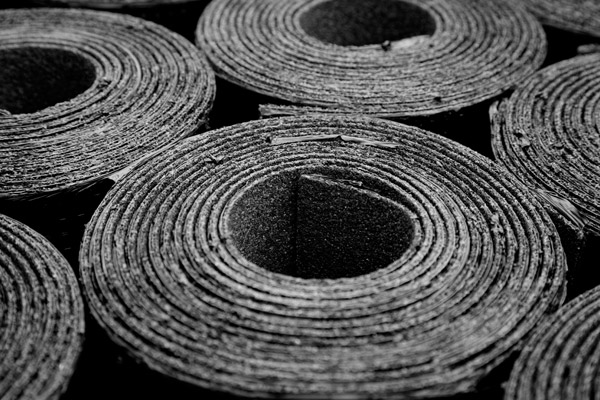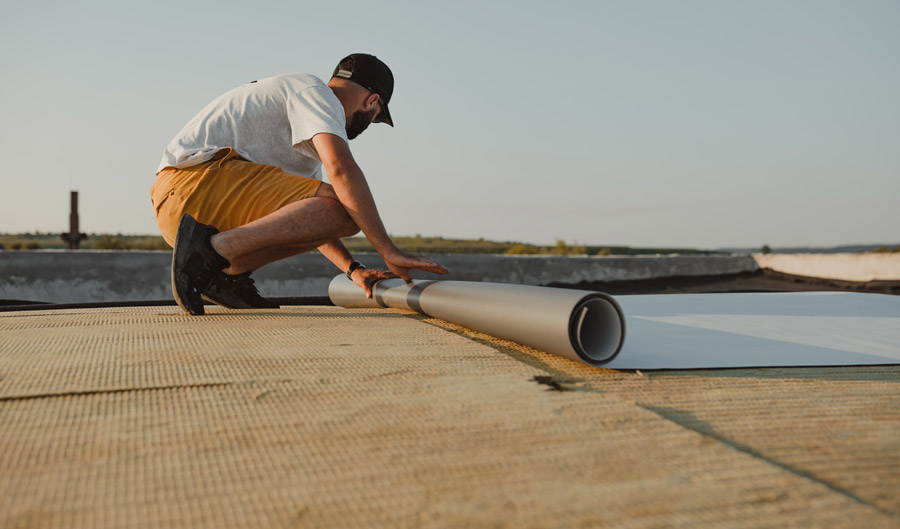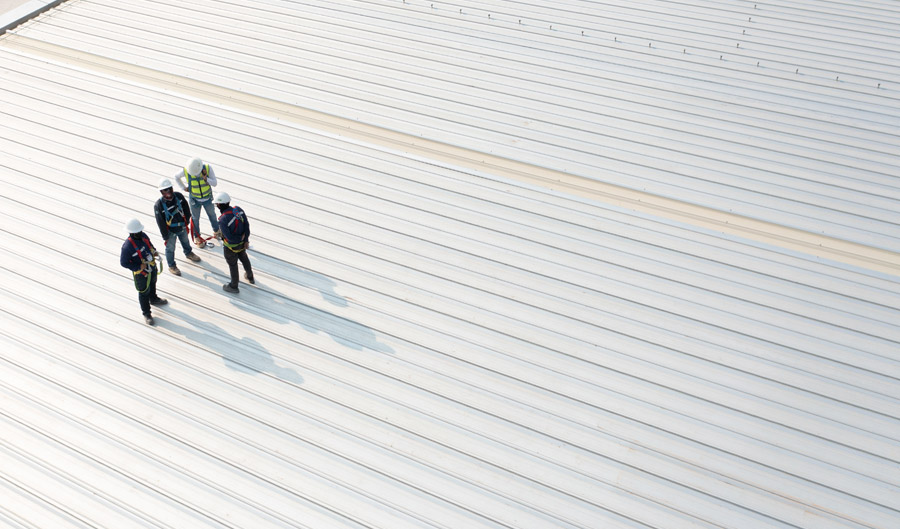

Flat Roofing Systems Overview
Flat roofing systems are a popular choice for both commercial and residential buildings, especially in urban environments where maximizing space is crucial. Unlike sloped roofs, flat roofs offer a level surface that can be utilized for various purposes, including rooftop gardens or additional living spaces.
These systems are characterized by their minimal pitch, which is enough for water drainage but still considerably flatter compared to traditional pitched roofs.
While the term 'flat' is used, these roofs are seldom perfectly flat. They have a slight slope to enable water runoff and prevent pooling. Flat roofs are not just a contemporary choice; they have been used for centuries across various cultures and architectural styles.
Today, they are lauded for their modern appearance, space efficiency, and versatility. If you're considering a flat roof for your building, take a look at flat roof replacement cost here.
Request an AppointmentThe Benefits of a Flat Roofing System
Flat roofing systems offer several advantages over their sloped counterparts:

Flat Roofing Benefits:
- • Cost-Effective: First, they are generally more cost-effective to install, as they require fewer materials and labor.
- • Energy Savings: The flat surface also allows for easy installation of solar panels, which can lead to significant energy savings.
- • Maintenance & Repair: Additionally, maintenance and repair work on flat roofs tend to be simpler due to the ease of access.
- • Space: Flat roofs provide an additional area for various uses, including recreational spaces or green roofs, which can improve building insulation and reduce urban heat islands.
In terms of design, flat roofs contribute to a sleek, modern aesthetic, often sought after in contemporary architecture.
Read More: Why Do Commercial Buildings Have Flat Roofs?
Flat Roofing Materials
Now, let's talk about some of the best flat roofing types you can choose for your commercial building or home. These include but are not limited to: modified bitumen, built-up, EPDM, PVC, and TPO roofing types:
Modified Bitumen (Mod Bit)
Modified bitumen is a modern take on the classic built-up roof (BUR) approach. It combines traditional and advanced roofing technologies to create a more resilient and adaptable material. Modified bitumen sheets are factory-fabricated, composed of asphalt modified with polymers, and reinforced with fiberglass or polyester fiber matting.
This combination enhances the asphalt's performance, providing greater elasticity, durability, and temperature flexibility. Mod bit roofs are particularly well-suited for buildings that experience significant temperature fluctuations.
The application process can vary: hot-applied systems use heated asphalt, cold-applied systems rely on solvent-based adhesives, and self-adhered sheets have pre-applied adhesive. These roofs are reflective and can be treated with surfacing options to improve UV resistance, waterproofing, and fire resistance.
Despite its merits, modified bitumen requires professional installation and maintenance to address any punctures or wear and tear. In addition, they have a shorter lifespan (15-20 years) and can be challenging to repair in case of leaks.
Built-Up Roofs (BUR)
Built-Up Roofing Systems are one of the oldest and most reliable methods of roofing. They are constructed by alternating layers of bitumen (usually asphalt or coal tar) and reinforcing fabrics, creating a finished membrane. The number of layers (or "plies") can be varied to adjust the roof's durability and cost.
This roofing type boasts a lifespan of 15-30 years and requires minimal maintenance. It offers excellent UV protection and is fire-resistant, though it is more costly and time-consuming to install compared to other systems.
The topmost layer of a BUR system is usually a gravel or stone layer, which provides durability and resistance to UV rays. This layer also adds weight to the roof, helping to stabilize and protect it from wind uplift. BUR systems are known for their redundancy; if one layer fails, others can still provide protection.
This roofing type is ideal for roofs with heavy foot traffic or those requiring substantial waterproofing. However, the installation of BUR is labor-intensive and requires skilled craftsmen, making it more expensive and time-consuming compared to other flat roofing options.
EPDM Rubber
EPDM (Ethylene Propylene Diene Monomer) is a synthetic rubber roofing membrane known for its durability and versatility. It is particularly resistant to inclement weather, UV rays, and ozone. EPDM roofs are lightweight, making them a good choice for buildings with weight-bearing concerns. The material is also flexible, which allows it to expand and contract with temperature changes without cracking.
EPDM roofing systems are typically installed in large sheets, which reduces the number of seams and the potential for leaks. They can be attached with mechanical fasteners, adhered with glue, or ballasted with stone.
While black EPDM absorbs heat (which can be beneficial in colder climates), white or light-colored EPDM membranes reflect sunlight, helping to reduce cooling costs in warmer climates. Despite its resilience, EPDM can be susceptible to punctures, and installation quality can vary significantly depending on the contractor.
This synthetic rubber roofing is known for its versatility and effectiveness. Available in several colors, EPDM is lightweight, durable, and has a long lifespan (around 30 years). It is more affordable than other single-ply membranes and relatively easy to maintain.
Single-Ply (PVC, TPO)
Single-ply membranes, specifically PVC (Polyvinyl Chloride) and TPO (Thermoplastic Polyolefin), represent a more modern approach to flat roofing. Both are lightweight, highly reflective, and UV-resistant, contributing to energy efficiency in buildings. It is flexible and cost-effective but has a shorter lifespan (10-25 years). Quality variations in TPO membranes are a concern among different manufacturers.
PVC roofing is known for its durability and resistance to environmental factors like chemicals, oils, and animal fats, making it a popular choice for restaurants and other businesses. It is also highly resistant to fire, wind, and punctures. TPO, comparatively newer in the market, combines the durability of EPDM rubber with the performance of hot-air welded seams, typical of PVC.
TPO's flexibility makes it ideal for a variety of building designs. However, as TPO is still relatively new, its long-term performance is less well-documented than PVC's. Both PVC and TPO are environmentally friendly options, being recyclable at the end of their life cycle. However, the quality and longevity of these materials can vary based on the manufacturer and the installation process.
Read More: TPO Roofing Maintenance
How to Care for a Flat Roofing System
Proper maintenance is key to extending the lifespan of a flat roof. Regular roof inspections should be conducted to identify and address issues like cracks, blisters, or pooling water. Cleaning debris and ensuring proper drainage are also essential to prevent water damage.
While some maintenance tasks can be handled through DIY methods, such as debris removal and basic inspections, it's recommended to engage professional roofing companies for more complex tasks. Professionals can conduct thorough inspections, perform repairs and replacements, and offer expert advice on the care of specific roofing materials. Regular maintenance by experts can preempt major issues and ensure the roof's longevity.
Read More: How to Handle Ponding on a Flat Roof
Why Choose LOA Construction for a Flat Roof Installation?
LOA Construction is a trusted name in the Austin, Houston, San Antonio Round Rock, and Belton, Temple, & Killeen communities for both residential and business flat roof installations. Our expertise spans various types of flat roofing materials, ensuring that each project is tailored to meet the unique needs and preferences of our clients.

Contact Us
We are committed to providing high-quality residential and commercial roofing services, such as installation, repairs, replacements, hail damage repair, roof coatings, maintenance, emergency services and more - from the initial consultation to the final installation. Our team's extensive knowledge and experience in flat roofing systems make us the ideal choice for those seeking reliable, efficient, and professional roofing services in these vibrant Texan communities.
Request an AppointmentRead More: Flat Roof Repair: How to Know if You Need One
Further Reading:
- • Our Austin Roofing Services
- • Everything You Need to Know About Commercial Roofing
- • Roofing in San Antonio: Navigating Roofing Code Compliance
- • 4 Tips for What to do When Your Roof Starts Leaking
- • 5 Things You Should Know About Austin Roofing
- • Need An Emergency Roof Fix? What To Look For When Hiring A Company
- • What Does a Roof Leak Repair Cost?: How To Get The Most Out of Your Money
- • What Is the Best Time of Year to Install a Roof?
- • How to Know When It’s Time to Replace a Roof?
- • Roof Leaks In Heavy Rain: Don’t Ignore The Warning Signs of Roofing Damage
- • What Happens at a Roof Inspection?
- • General Guide to Roofing Codes in Austin, TX
- • When is Roofing Season in Texas?
- • How to Find The Best Company to Help With Your Emergency Roof Repair
- • 5 Essential Roof Repair Tips for Austin Property Owners
- • Common Roofing Terms to Know
- • Signs Your Roof Needs a Repair
- • What Does a Commercial Roofing Repair Look Like
- • Need To Get A Roof Estimate in Austin, TX?: Here’s How To Find The Right Roofing Company
- • What Questions Do I Need to Ask My Insurance Provider About Replacing My Roof?
- • 12 Common Roofing Problems and How to Prevent Them
- • Is Your Roof Leaking by a Vent Pipe?
- • How Humidity Affects Your Roof During Winter
- • How to Avoid Common Roofing Mistakes
